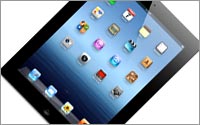
Is 2012 the year of mobile? Probably not. From a device standpoint, the year of mobile came and went sometime last year when smartphone
penetration reached 50% of all mobile phones in the U.S.
From an advertising standpoint, mobile's year has yet to come -- the industry is still trying to figure out optimal ways for marketers
to use the medium, and mobile ad budgets are disproportionately low compared to usage.
That was the consensus of a panel session of mobile experts who assembled at PHD headquarters in New York
Monday to discuss the medium’s appeal to consumers and potential for marketers.
The session was part of a week-long series of events that PHD is staging this week for clients and
staffers to help them better understand the mobile ad marketplace and how it is impacting both online and offline platforms.
advertisement
advertisement
According to Eli Goodman, media evangelist at comScore, about 12%
of all Internet usage is now mobile usage, while only between 1% and 2% of marketer ad budgets are placed against mobile.
But for sports fans, mobile has become virtually indispensable, said
David Roter, senior director digital sales and strategy at ESPN. For the network’s coverage of live games, up to 50% of online usage comes from mobile, he said. The key for advertisers, he said,
is “managing that connectedness to a live event.”
Jeremy Steinberg, vice president digital sales and business development at Fox News Channel, said the network's “oh crap
moment” with regard to mobile came about six months ago. “We woke up one day and people were consuming more mobile” devices then laptops, he said.
Now, he said, the network
is “almost entirely focused” on a multiscreen marketing strategy. The task for content providers is twofold, he said. First, they must successfully translate their product to all devices
“or it will fail.” Learning how to make money from mobile platforms also remains a key challenge. “Nobody has figured it out yet,” he said.
Except maybe ESPN, said
Roter, who said the network sells mobile's qualities as an engagement vehicle with “synergistic” capabilities. “It drives great metrics when combined with other media,” he
said.
That said, mobile has a long way to go before marketers are spending at parity levels compared to usage, said Steve Siegel, video solutions specialist at Microsoft. In fact, he said,
marketers are probably spending less in the overall digital space then they should be, based on usage. “I don't know if we’re at parity,” he said. “I think we have a ways to go
with everything digital.”
Seth Rogin, vice president advertising at The New York Times, said being aware of consumer habits is key and that the science enabling that knowledge
has advanced. “We produce the water” while consumers “pick the faucet,” he said. One example he noted was that the Times’ site streamed the presidential
debates live, while the company used its mobile platform to fact-check what the candidates were saying.